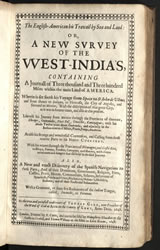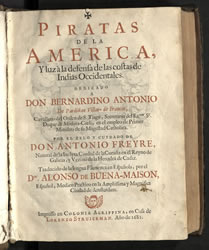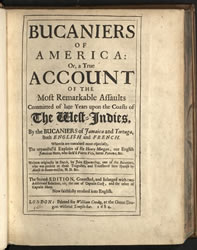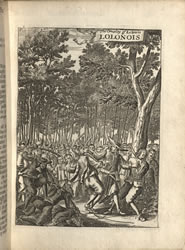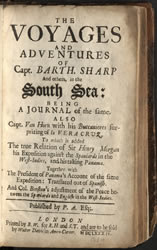
By the middle of the seventeenth century, the French, Dutch, and English began to increasingly plunder the Spanish while initiating colonization, often on the same voyages. Some of these men, known as buccaneers, lived in the islands of the Caribbean, balancing a life of cattle herding and plunder. Following the English Civil War (1642-1651), Oliver Cromwell initiated the first state- sponsored plunder raid against the Spanish in the West Indies, known as the Western Design. Considered a failure, the Design did result in the occupation by the English of the island of Jamaica in 1655. Soon the deep harbor of Port Royal became the home base for sea marauders of all nations.
Thomas Gage was an English Dominican friar who spent a great deal of time in the Spanish West Indies and on the mainland. He met many English pirates imprisoned by the Spanish who convinced him of Spanish vulnerabilities in the New World. Gage converted to Protestantism and returned to England where he published The English-American, the text that convinced Cromwell to initiate the Western Design and inspired decades of plunder against the Spanish.
This is the first Spanish edition of one of the most important first-hand accounts of seventeenth-century pirates of the Caribbean. This Dutch surgeon first published his account in Amsterdam in 1678 under the title De Americaensche zeerovers. This Spanish version was the basis for later English translations.
This first English edition of Exquemelin’s text described in detail the violence performed by English “pirates” in the Caribbean led by Henry Morgan. At the time of its publication, Morgan had not only been pardoned, he was knighted and made Deputy Governor of Jamaica. Morgan sued the publishers, not for their depictions of violence and rape, but because they dared to claim he arrived in the Caribbean as an indentured servant. Howard Pyle, a famous illustrator of pirate scenes from the late nineteenth century, once owned this edition.
This English translation included the journal of Basil Ringrose, a buccaneer surgeon. For obvious reasons, surgeons were prized members of pirate crews and because they were better educated they authored many of the published buccaneer journals. Here the French pirate Francois L’Olonnais, according to Exquemelin “drew his cutlass, and with it cut open the breast of one of those poor Spanish, and pulling out his heart with his sacrilegious hands, began to bite and gnaw it with his teeth, like a ravenous wolf, saying to the rest: I will serve you all alike.”
Bartholomew Sharp was a typical sea marauder of the seventeenth century who committed acts of piracy intermittent with legitimate service. His published journal described how he plundered the Spanish in the South Sea, the coast of what is today Chile and Peru. He avoided charges of piracy by providing a detailed map of that coastline to the royal navy. Sharp included in this publication a detailed defense of Henry Morgan’s raids.
